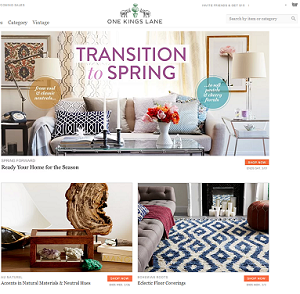5 Quick Tips for Retailers with Social Media and Weblog Data
This is a guest post by Ritu Jain, Director of Industry Marketing at Alteryx.
A research study by KPMG showed that only about 12% of retailers consider their organization to be highly analytically literate. In a similar vein, 77% of retailer respondents in a recent RSR Research survey listed limited availability of analytical skills to be the biggest organizational inhibitor in wider spread usage of analytics.
Retailers don’t really need very high-end/expensive analytical expertise (read: Ph.D. statisticians or programming gurus) to get significant value from their data. Nor is there any need to start with very extensive and complex analytical models. Simple segmentation or trend analysis, based on one or two key variables, applied the right way can help derive enough value to get you moving in the right direction.

Below are 5 quick ways retailers can perform simple analyses on their online and social media data to drive business forward:
1. Improve Targeting & Personalize Communications: Customers’ online search and browsing behavior data and purchase history can give retailers quick insights into their preferences, wants, and desires. Analysts can visually explore the data to quickly identify “like” attributes of customers showing common preferences and use that information to create targeted “micro” segments and personalize promotions. One Kings Lane, an online home décor marketplace company, is using data discovery and visualization capabilities from Tableau to better present merchandise to customers based on their browsing history and purchase preferences.

2. Create Next-Best Product Recommendation: Blending and visually exploring browsing history and shopping cart data can help retailers quickly determine different products customers looked at and the products they ultimately purchased. Merchandisers can use this information to offter potential substitutions or add-ons. This information can then be used to optimize product assortments, populate next-best product recommendations queue, and shape demand. For instance, the VF Corporation--with brands like The North Face, Nautica, Lee and Wrangler--uses Alteryx to blend and analyze POS data from its dealer network, branded stores and e-commerce operations with customer life variables for assortment planning & optimization.

3. Optimize Media Mix: Blending campaign response data on various promotions and segmenting that information by promotional vehicles—TV, YouTube, social media sites and online media properties—can help retailers determine which promotions are performing better via which media. It can also help identify media preferences by target segments—which then can be used to optimize media mix for marketing/promotions. Alteryx’s marketing mix app demonstrates how you can optimize spend by advertising media to maximize return on your marketing dollars.
4. Develop New Products and Services: Social media can be a window into emerging market trends, consumer preferences and desires. Blending purchase history with customer commentary from online product review forums and social media sites can give retailers insights into which of their own or competitive products/services are most valued/disliked, what are the emerging product quality issues and which features are most desired. Retailers can use that information directly, as well as share with their trade partners—brand manufacturers and franchisees—for product and service redesigns/upgrades, new product introductions and even removals. Chocalatier Kilwins is using purchase history and promotions response data to test-market new products fast and provide assortment guidance to its franchisees.
5. Prioritize Customer Support Decisions: A visual exploration of social media data can quickly help reveal the potential influence and therefore impact of a particular comment/tweet based on the size of the following of the commenter. Retailers can use that information to prioritize customer-support decisions; estimate market needs, and even plan network expansion.
Most data-driven companies like Walmart did not start on their analytic journey with large teams of Ph.D statisticians or expensive programmers, tackling huge complex data analysis projects. Instead, they started with smaller, simpler explorations, executed by their line of business analysts – people closest to the business problem -- that wanted an answer. And therein lies the key to analytic success: Empowering business analysts, so they can derive insights from their own data, without the delays that come from IT dependence.
You can start small and use your successes to make analytical thinking more pervasive within a retail organization.
Let us know in the comments what your challenges and triumphs are with big data and how you are making data-driven decision-making part of your organizational culture.
Subscribe to our blog
在收件匣中收到最新的 Tableau 消息。



